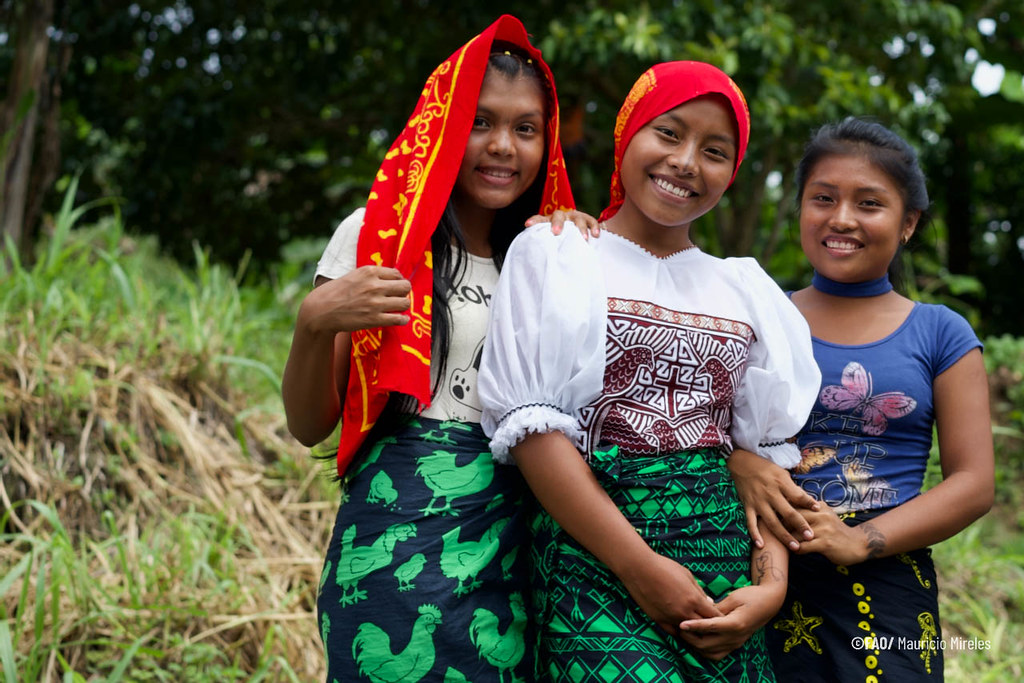Santiago, Chile/New York, March 25 – Indigenous and tribal peoples are the best caretakers of the immense forests in Latin America, physically occupying a total of 404 million hectares of lands, said a new report issued by the Food and Agriculture Organization (FAO) and the Development of Indigenous Peoples of Latin America and the Caribbean (FILAC).
Some 237 million hectares, or almost 60 per cent of the total 404 million hectares, are in the Amazon Basin, the size of which is larger than France, Great Britain, Germany, Italy, Norway and Spain combined.
The report entitled “Forest Governance by Indigenous and Tribal Peoples” said improving tenure of the forests by indigenous and tribal peoples can lower deforestation rates and biodiversity loss, avoiding C02 emissions, but more investment is urgently needed to address rising threats.
More information can be found in: https://burness.com/press-room/fao-forest-governance-indigenous-tribal-peoples
The report said deforestation rates in Latin America and the Caribbean are significantly lower in indigenous and tribal territories where “governments have formally recognized collective territorial rights, and improving the tenure security of these territories is an efficient and cost-effective way to reduce carbon emissions.”
“Based on a review of more than 300 studies published in the last two decades, the new report reveals for the first time the extent to which science has shown that Indigenous and Tribal Peoples have generally been much better guardians of their forests when compared to those responsible for the region´s other forests.”
“The research also suggests that their protective role is increasingly at risk, at a time when the Amazon is nearing a tipping point, with worrisome impacts on rainfall and temperature, and, eventually, on food production and the global climate.
“Indigenous and tribal peoples and the forests in their territories play vital roles in global and regional climate action and in fighting poverty, hunger, and malnutrition,” FAO’s Regional Representative, Julio Berdegué. “Their territories contain about one third of all the carbon stored in the forests of Latin America and the Caribbean and 14 percent of the carbon stored in tropical forests worldwide.”
Following is from the press release on the report: The best results were seen in indigenous territories that have recognized collective legal titles to their lands: between 2000 and 2012, deforestation rates in these territories in the Bolivian, Brazilian, and Colombian Amazon were only one half to one third of those in other forests with similar ecological characteristics.
The report calls on governments, climate financiers, civil society and the private sector to invest in initiatives that strengthen the role that Indigenous and Tribal Peoples play in forest governance, bolster communal territorial rights, compensate indigenous and tribal communities for the environmental services they provide, and facilitate community forest management.
It also states the vital importance of revitalizing traditional cultures and knowledge, strengthening territorial governance as well as supporting the organizations of indigenous and tribal peoples, recognizing the fundamental role of indigenous youth and indigenous women.
Titled territories suffer lower deforestation, emit less carbon
According to one of the studies analyzed in the FAO/FILAC report, the deforestation rate inside indigenous woodlands where land property has been ensured where 2.8 times lower than outside such areas in Bolivia, 2.5 times lower in Brazil and 2 times less in Colombia.
Titled collective territories avoided between 42.8 and 59.7 million metric tons (MtC) of CO2 emissions each year in these three countries; these combined emissions were the equivalent of taking between 9 and 12.6 million vehicles out of circulation for one year.
Of the 404 million hectares occupied by the indigenous peoples, governments have formally recognized their collective property or usufruct rights over about 269 million hectares; while the impact of guaranteeing tenure security is great, the cost is very low: only US 6 dollars are needed to title a hectare of land in Colombia, and US 45 dollars in Bolivia.
The FAO/FILAC report says that the costs of securing indigenous lands are 5 to 42 times lower than the average costs of avoided CO2 through fossil carbon capture and storage for both coal and gas fired power plants.
Indigenous and tribal peoples are invaluable agents against climate change
“Almost half (45 percent) of the intact forests in the Amazon Basin are in indigenous territories –said Myrna Cunningham, president of FILAC-, and the evidence of their vital role in forest protection is crystal clear: while the area of intact forest declined by only 4.9 percent between 2000 and 2016 in the region’s indigenous areas, in the non-indigenous areas it fell by 11.2 percent. This makes evident why their voice and vision should be taken into account in all global initiatives and frameworks relating to climate change, biodiversity and forestry, among many other topics.”
Indigenous and tribal peoples are involved in the communal governance of between 320 and 380 million hectares of forests in the region, which store about 34,000 million metric tons of carbon, more than all the forests in Indonesia or in the Democratic Republic of Congo.
While Amazon Basin indigenous territories lost less than 0.3% of the carbon in their forests between 2003 and 2016, non-indigenous protected areas lost 0.6%, and other areas that were neither indigenous territories nor protected areas lost 3.6%: ss a result, even though indigenous territories cover 28% of the Amazon Basin, they only generated 2.6% of the region’s (gross) carbon emissions.
United Nations correspondent journalists – United Nations correspondent journalists – United Nations correspondent journalists
United Nations journalism articles – United Nations journalism articles – United Nations journalism articles

